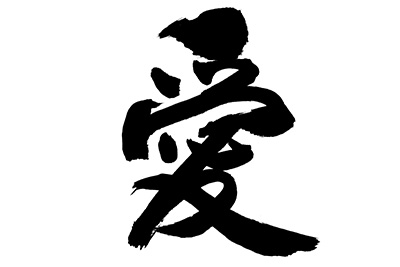Why Kanji is Necessary
Convert your name or your favorite word into Kanji! Why not use it for T-shirts, stamps, stickers or tattoos?
Convert your name or your favorite word into Kanji! Why not use it for T-shirts, stamps, stickers or tattoos?
Last updated : 10.12.2020
Author : Akira Katakami
 The Japanese language has three writing systems: Hiragana, Katakana, and Kanji. In one sentence, you could possibly see all three of them. However, for those who are considering picking up the language, it can seem challenging if you have the mentality that one writing system is hard enough to master. Kanji is usually the writing system that Japanese learners have the most difficulty with. Each character looks complicated. Because
of that, some of them stop studying Kanji and focus more on the two other writing systems.
The Japanese language has three writing systems: Hiragana, Katakana, and Kanji. In one sentence, you could possibly see all three of them. However, for those who are considering picking up the language, it can seem challenging if you have the mentality that one writing system is hard enough to master. Kanji is usually the writing system that Japanese learners have the most difficulty with. Each character looks complicated. Because
of that, some of them stop studying Kanji and focus more on the two other writing systems.
This brings up the question: How important is kanji in the Japanese language?
Let us look at the importance of kanji. You may not believe it, but Kanji is extremely important in Japanese language. It is significant in interpreting words or even a sentence. There are few ways that kanji is notably useful in Japanese language – Let us look at some of them
It follows the same concept as English synonyms. In English, you just take the context and work with it. In Japanese, Kanji helps give meaning to words. For example, the word for “biology” in Japanese is Seibutugaku (生物学). Even if you do not know the word in Japanese or how it is pronounced, you can guess its meaning based on the meanings of the individual kanji characters. The Kanji 生 refers to “raw”, the Kanji 物 refers to “things” and the Kanji 学 has the means to “study”. If you combine them all together, you could guess that it means the study of raw things.
 In the Japanese language, there are a lot of homonyms, which means that there are several words that have the same pronunciation and sounds. One pronunciation can have over 20 different meanings. The Japanese differentiate them in Kanji characters. A few examples are the Kanji(漢字) which refer to the Chinese characters, and the Kanji(感じ) which has a meaning of “feeling”. These have two different meanings, but have the same
pronunciation.
In the Japanese language, there are a lot of homonyms, which means that there are several words that have the same pronunciation and sounds. One pronunciation can have over 20 different meanings. The Japanese differentiate them in Kanji characters. A few examples are the Kanji(漢字) which refer to the Chinese characters, and the Kanji(感じ) which has a meaning of “feeling”. These have two different meanings, but have the same
pronunciation.
Radicals refer to the components of a Kanji character. Some Kanji character are made up of characters that are combined into one character. For example, the kanji 木 refers to “wood”, but it is also a radical in a few other Kanji characters like branch 枝, roots 荄, and forest 森. Another example is water (水). You can find the radical of
water in these words: ice (氷), fountain (泉), forever (永), request (求). On the bottom and center of the character, you can see the 水 kanji.
Some radicals are on the right, upper, or lower side. The Kanji 草, is a radical in a few of
these Kanji on the upper side: flower (花), strawberry (苺), tea (茶) and potato (芋).
Kanji character plays an important role in Japanese language. Though it might be easier to stick with the other two writing systems, especially if you are trying to grip the basic grammar. But if you are looking for more advanced knowledge, kanji is essential. It is a bit more challenging compared to Hiragana and Katakana, but it is worth learning and being familiarized with.

Seigakudou(静岳堂)
Seigakudou(静岳堂), a working calligrapher and native Japanese, will write your name in Kanji. Rather than a computer font, your kanji name will be hand-brushed by a professional calligrapher.

Akira Katakami(片上明)
The translation from English to Japanese will be undertaken by a professional native Japanese translator with a kanji proficiency qualification, you can be sure of an error free standard. Also, an explanation of your kanji name will be provided in English.